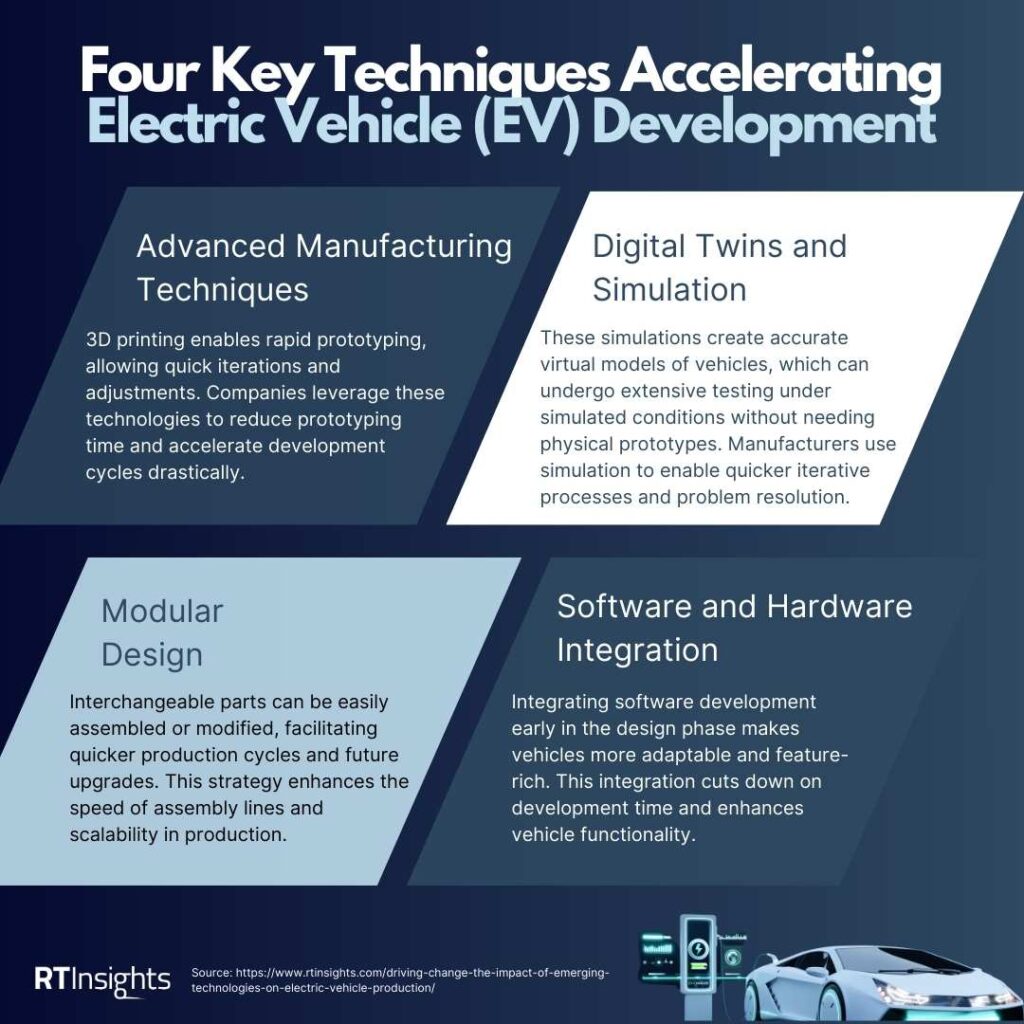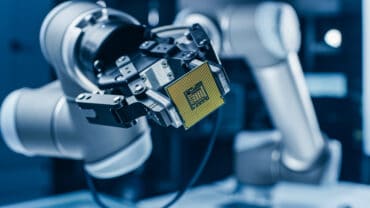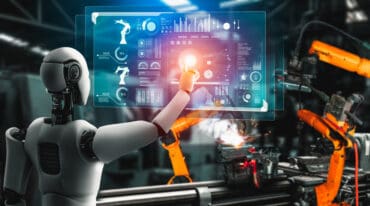
A variety of emerging technologies will play a major role in electric vehicle (EV) design and production. Here are some of the major ones to be aware of.
The electric vehicle (EV) technology surge has changed the automotive industry. As manufacturers race to capture market share, the ability to shorten development cycles has become a critical competitive edge. EV manufacturers are achieving this through cutting-edge manufacturing techniques, collaboration, and strategic innovations, but traditional manufacturing is also implementing similar measures. However, each must still consider the nuanced implications of such rapid advancements.
Accelerating EV Development: Key Techniques
EV manufacturers employ several innovative techniques to enhance product development and ensure efficiency, which include:
- Advanced Manufacturing Techniques: 3D printing enables rapid prototyping, allowing quick iterations and adjustments. Companies leverage these technologies to reduce prototyping time and accelerate development cycles drastically.
- Digital Twins and Simulation: These simulations create accurate virtual models of vehicles, which can undergo extensive testing under simulated conditions without needing physical prototypes. Manufacturers use simulation to enable quicker iterative processes and problem resolution.
- Modular Design: Interchangeable parts can be easily assembled or modified, facilitating quicker production cycles and future upgrades. This strategy enhances the speed of assembly lines and scalability in production.
- Software and Hardware Integration: Integrating software development early in the design phase makes vehicles more adaptable and feature-rich. This integration cuts down on development time and enhances vehicle functionality.
These strategies collectively form a comprehensive approach to manufacturing that accelerates the development cycle, aligns with technological advancements, and meets evolving market expectations.

See also: Smart Manufacturing Essential for the Transition to EVs
Collaborative Engineering and Regulatory Synergy
It’s not just the latest tools and machines that are driving acceleration. Both collaborative engineering practices and the strategic navigation of regulatory landscapes significantly influence EV development. Together, these elements facilitate more streamlined and effective manufacturing processes:
Integration of Multidisciplinary Teams
EV manufacturers are increasingly adopting a collaborative approach, integrating multidisciplinary teams that include electrical, mechanical, and software engineers. This collaboration allows for a holistic view of vehicle development, where complex problems can be tackled more efficiently and from multiple perspectives. Tools like agile project management and concurrent engineering methodologies enhance these efforts by keeping projects adaptable and on schedule, thus reducing development time and increasing productivity.
Regulatory Support and Standardization
As the EV market grows, so does the need for clear regulatory frameworks and industry standards. These regulations and standards help simplify design choices by defining clear parameters within which manufacturers must operate. For instance, standardized battery systems and charging protocols can reduce the complexity of engineering tasks and ensure compatibility across different models and systems. This streamlines production and facilitates faster market entry by reducing uncertainties and the time associated with bespoke solutions.
By leveraging advanced collaboration techniques and adhering to evolving regulatory standards, EV manufacturers can more effectively navigate the complexities of vehicle development. This dual approach speeds up the development cycle and ensures that the final products are robust, compliant, and ready for a competitive market.
The Double-Edged Sword of Accelerated EV Development Cycles
While accelerating the development cycle offers substantial benefits for electric vehicle (EV) manufacturers, such as quicker market entry and enhanced competitiveness, it also introduces complex challenges that may not be immediately apparent. These include the nuances of customer engagement and environmental implications.
Customer Feedback and Open Innovation
In the race to reduce development times, many EV manufacturers increasingly leverage direct customer interactions through platforms like social media, prototype showcases, and beta testing. This open innovation approach allows for rapid feedback incorporation into the design process, enhancing product relevance and consumer satisfaction. However, this method requires manufacturers to balance speed with the depth of feedback analysis. Quick iterations may risk oversimplifying customer insights or bypassing critical design improvements, potentially leading to products that might not fully meet long-term user needs or expectations.
Environmental Considerations
Accelerating development cycles can strain environmental resources and sustainability goals. The push for faster production can lead to increased waste and greater resource consumption. For example, frequent design iterations might result in more materials used for prototypes, which may not always be recycled or recyclable. Additionally, the intensified activities across the supply chain could amplify carbon footprints, contrary to the environmental ethos that often drives the EV market.
To manage these challenges, EV manufacturers could adopt strategies that ensure both rapid development and thoughtful consideration of broader impacts:
- Integrated Feedback Systems: Developing more structured systems to gather, analyze, and integrate customer feedback can help ensure that the insights collected are deeply understood and effectively applied, preventing the rush in development from missing critical user-centric improvements.
- Sustainable Prototyping and Manufacturing: Employing sustainable practices in prototyping, such as using biodegradable or recyclable materials and optimizing resource usage, can mitigate environmental impacts. Additionally, manufacturers can explore more efficient logistics and supply chain management practices to reduce carbon emissions.
Ultimately, while accelerating development cycles presents a significant advantage in the competitive EV landscape, it necessitates a balanced approach that considers the intricate relationship between rapid innovation, customer satisfaction, and environmental stewardship. By addressing these facets, manufacturers innovate responsibly and contribute to sustainable advancements in the automotive industry.
Shaping the Future of Mobility
The advancements in electric vehicle (EV) development technologies are not just reshaping production timelines but fundamentally transforming mobility’s future. Adopting advanced manufacturing techniques, collaborative engineering practices, and integrating regulatory standards are accelerating the pace at which new, more efficient vehicles reach the market.
These technologies promise to make EVs more accessible, affordable, and adaptable, aligning with the increasing global demand for sustainable transportation solutions. The rapid development cycles enabled by these advancements are crucial for keeping pace with technological and environmental changes, ensuring that the automotive industry can swiftly respond to new challenges and opportunities.
As we continue to advance, these technologies have the potential to drive significant improvements in energy efficiency, reduce carbon footprints, and enhance the overall user experience. The future of mobility is poised to be more dynamic, more responsive, and better aligned with sustainable development goals.










